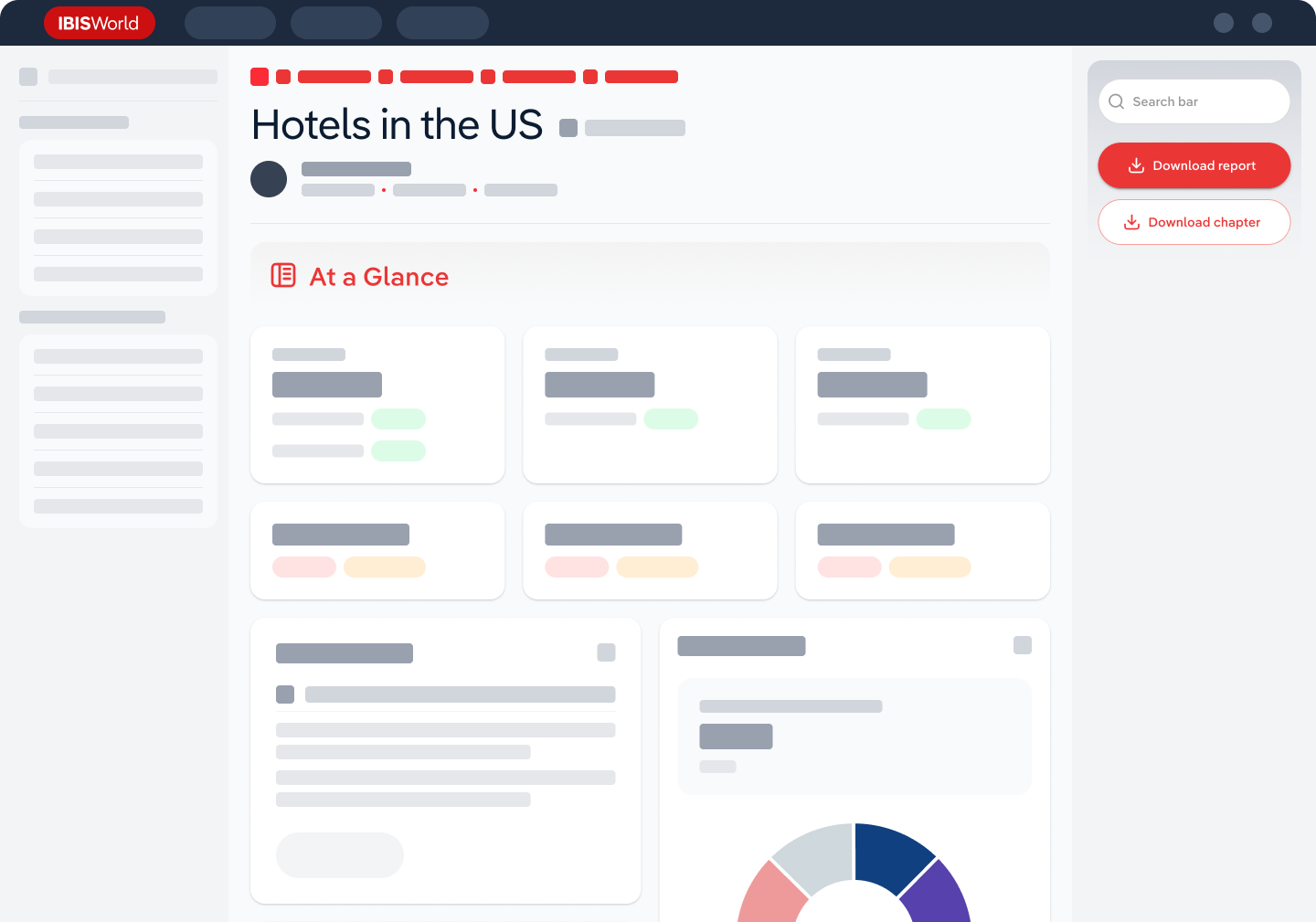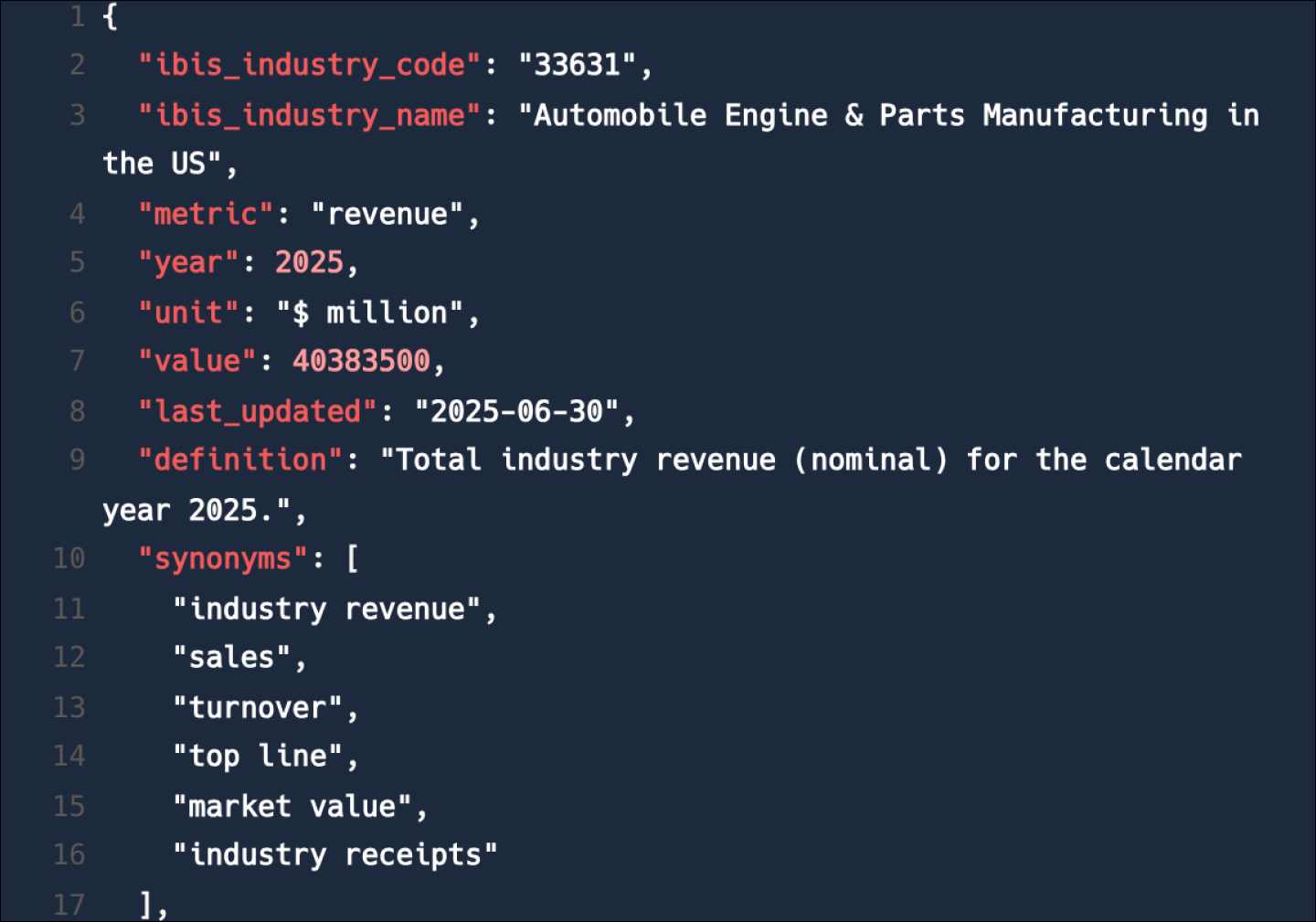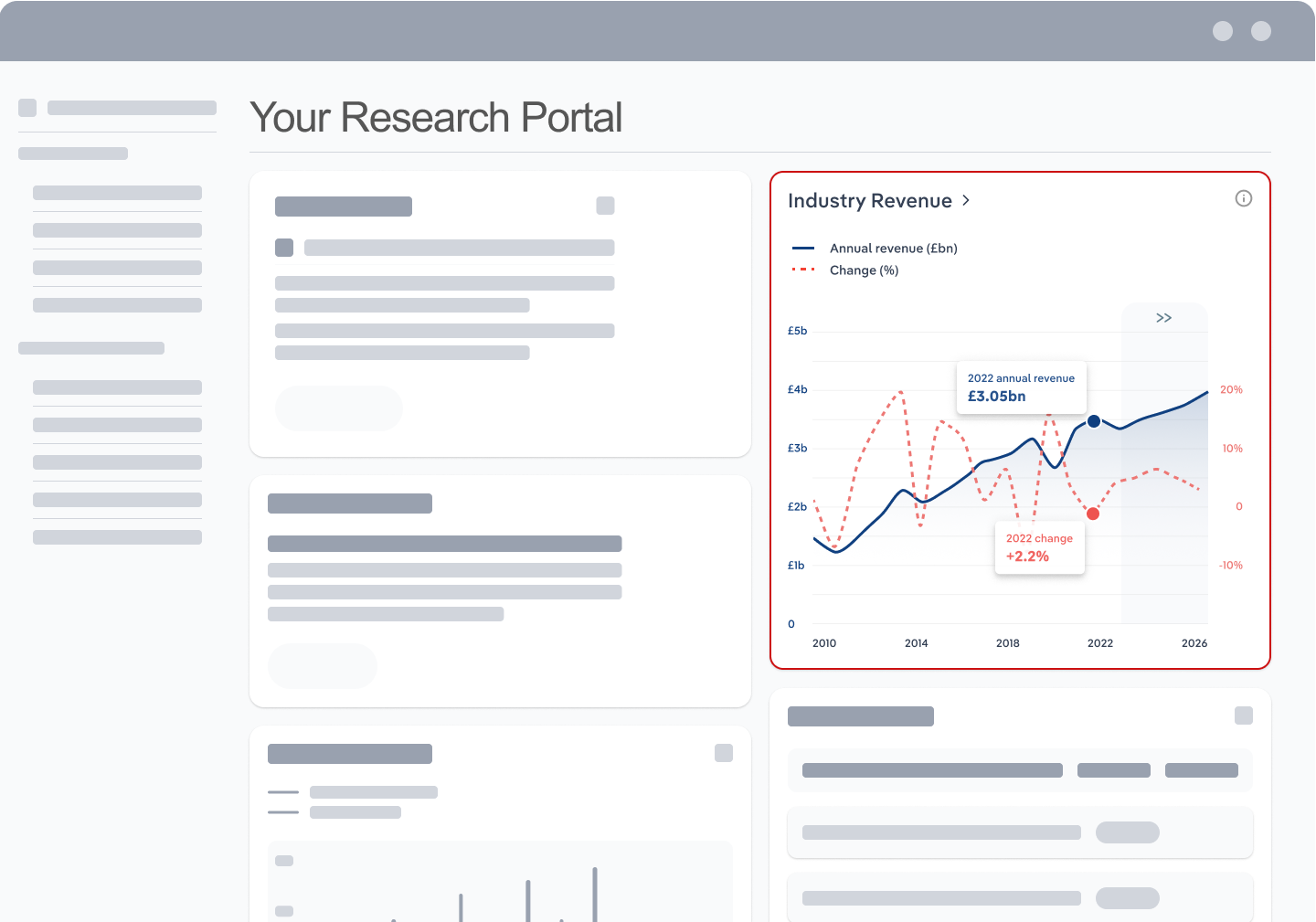Industry Statistics and Trends
Market size and recent performance (2015-2030)
Industry revenue has declined at a CAGR of 0.2 % over the past five years, to reach an estimated $102.3bn in 2025.
Trends and Insights
Environmental regulations increasingly impact recyclable material wholesalers
- Evolving federal and state environmental regulations are forcing wholesalers of materials like ferrous and nonferrous metals, plastics and automotive parts to update their compliance and reporting systems. Regulatory pressure is particularly acute in states such as California, Oregon and New York where stricter standards have come into effect in recent years.
- Additional trends and insights available with purchase
Industry outlook (2025-2030)
Market size is projected to grow over the next five years.
Trends and Insights
The circular economy will become imperative for recyclers as EPR laws expand and customer priorities shift
- The circular economy is set to become a dominant force in recyclable material wholesaling as more states introduce Extended Producer Responsibility (EPR) and mandatory recyclability labeling laws. This transition will increase emphasis on design, reuse and reintegration of materials such as steel, plastics, glass and paper within closed-loop systems, minimizing waste and satisfying both regulatory and customer expectations for sustainability.
Biggest companies in the Recyclable Material Wholesaling in the US
| Company | Market Share (%)
2025 | Revenue
2025 | Profit
2025 | Profit Margin (%)
2025 |
|---|
There are no companies that hold a market share exceeding 5% in the Recyclable Material Wholesaling in the US industry.
Products & Services Segmentation
Industry revenue is measured across several distinct product and services lines, including Ferrous scrap metal, Nonferrous scrap metal and Paper and paperboard. Ferrous scrap metal is the largest segment of the Recyclable Material Wholesaling in the US.
Trends and Insights
Ferrous scrap metal demand grows due to infrastructure expansion and decarbonization trends
- Over the past five years, demand for recycled ferrous metals has grown as public infrastructure projects and green building initiatives encourage the use of scrap-based steel. Companies like Nucor are expanding electric arc furnace operations, using more recycled inputs to help meet sustainability targets and reduce carbon emissions.
- More insights available in the full report
Table of Contents
About this industry
Industry definition
This industry wholesales automotive scrap, industrial scrap and other recyclable materials, such as waste paper, glass and plastic. Industry establishments include auto wreckers that dismantle motor vehicles to wholesale salvaged scrap material and establishments that break up, sort and wholesale all forms of scrap iron and steel using power-processing equipment.
What's included in this industry?
Products and services covered in the Recyclable Material Wholesaling industry in the United States include Wholesale sales of recyclable paper and paperboard, Wholesale sales of recyclable ferrous metal scrap, Wholesale sales of recyclable nonferrous metal scrap and Wholesale sales of other recyclable materials including metal products, construction supplies, chemicals, textiles, and more.Companies
Companies covered in the Recyclable Material Wholesaling industry in the United States include .Purchase this report to view all major companies in this industry.
Related Terms
Related terms covered in the Recyclable Material Wholesaling industry in the United States include ferrous metal, scrap, nonferrous metal, metallurgical coal, electric arc furnaces (eaf) and landfill tipping fee.Industry Code
NAICS 42393 - Recyclable Material Wholesaling in the US
Performance
Get an indication of the industry's health through historical, current and forward-looking trends in the performance indicators that make or break businesses.
Analyst insights
Wholesalers have improved profits by investing in advanced technology and forming strategic supplier relationships. These efforts have allowed companies to adapt quickly to m...
In this chapter (4)
- Current Performance
- Outlook
- Volatility
- Life Cycle
Key metrics
- Annual Revenue, Recent Growth, Forecast, Revenue Volatility
- Number of Employees, Recent Growth, Forecast, Employees per Business, Revenue per Employee
- Number of Businesses, Recent Growth, Forecast, Employees per Business, Revenue per Business
- Total Profit, Profit Margin, Profit per Business
Charts
- Revenue, including historical (2015-2024) and forecast (2025-2030)
- Employees, including historical (2015-2024) and forecast (2025-2030)
- Businesses, including historical (2015-2024) and forecast (2025-2030)
- Profit, including historical (2015-2025)
- Industry Volatility vs. Revenue Growth
- Industry Life Cycle
Detailed analysis
- Trends in supply, demand and current events that are driving current industry performance
- Expected trends, economic factors and ongoing events that drive the industry's outlook
- Key success factors for businesses to overcome volatility
- How contribution to GDP, industry saturation, innovation, consolidation, and technology and systems influence the industry's life cycle phase.
Products and Markets
Learn about an industry's products and services, markets and trends in international trade.
Analyst insight
Demand for recycled metals and plastics has grown due to infrastructure expansion, electric vehicles and changing manufacturing needs. Wholesalers invest in advanced technolo...
In this chapter
- Products & Services
- Major Markets
Key metrics
- Largest market segment and value in 2025
- Product innovation level
Charts
- Products & services segmentation in 2025
- Major market segmentation in 2025
Detailed analysis
- Trends impacting the recent performance of the industry's various segments
- Innovations in the industry's product or service offering, specialization or delivery method
- Key factors that successful businesses consider in their offerings
- Buying segments and key trends influencing demand for industry products and services
Geographic Breakdown
Discover where business activity is most concentrated in an industry and the factors driving these trends to find opportunities and conduct regional benchmarking.
Analyst insights
Population growth, manufacturing expansion and state incentives in the Southeast are increasing recyclable material supply and driving investment in new infrastructure and ope...
In this chapter (1)
- Business Locations
Charts
- Share of revenue, establishment, wages and employment in each state
- Share of population compared to establishments in each region in 2025
Tables
- Number and share of establishments in each state in 2025
- Number and share of revenue each state accounts for in 2025
- Number and share of wages each state accounts for in 2025
- Number and share of employees in each state in 2025
Detailed analysis
- Geographic spread of the industry across North America, and trends associated with changes in the business landscape
- Key success factors for businesses to use location to their advantage
Competitive Forces
Get data and insights on what's driving competition in an industry and the challenges industry operators and new entrants may face, with analysis built around Porter's Five Forces framework.
Analyst insights
Navigating complex legal regulations poses a significant challenge for new businesses. Compliance with federal and state environmental laws requires substantial legal experti...
In this chapter (4)
- Concentration
- Barriers to Entry
- Substitutes
- Buyer & Supplier Analysis
Key metrics
- Industry concentration level
- Industry competition level and trend
- Barriers to entry level and trend
- Substitutes level and trend
- Buyer power level and trend
- Supplier power level and trend
Charts
- Market share concentration among the top 4 suppliers from 2020-2025
- Supply chain including upstream supplying industries and downstream buying industries, flow chart
Detailed analysis
- Factors impacting the industry’s level of concentration, such as business distribution, new entrants, or merger and acquisition activity.
- Key success factors for businesses to manage the competitive environment of the industry.
- Challenges that potential industry entrants face such as legal, start-up costs, differentiation, labor/capital intensity and capital expenses.
- Key success factors for potential entrants to overcome barriers to entry.
- Competitive threats from potential substitutes for the industry’s own products and services.
- Key success factors for how successful businesses can compete with substitutes.
- Advantages that buyers have to keep favorable purchasing conditions.
- Advantages that suppliers have to maintain favorable selling conditions.
- Key success factors for how businesses can navigate buyer and supplier power.
Companies
There are no companies that hold a market share exceeding 5% in the Recyclable Material Wholesaling in the US industry.
Analyst insights
The Recyclable Material Wholesaling industry does not have any major companies with a market share greater than 5.0%. This is because of the industry's highly fragmented natu...
External Environment
Understand the demographic, economic and regulatory factors that shape how businesses in an industry perform.
Analyst insights
Revenue is highly sensitive to changes in the world price of commodities. Steel, iron, crude oil and other materials are beholden to international trends and production, affe...
In this chapter
- External Drivers
- Regulation & Policy
- Assistance
Key metrics
- Regulation & policy level and trend
- Assistance level and trend
Charts
- Regulation & Policy historical data and forecast (2015-2030)
- Assistance historical data and forecast (2015-2030)
Detailed analysis
- Demographic and macroeconomic factors influencing the industry, including Regulation & Policy and Assistance
- Major types of regulations, regulatory bodies, industry standards or specific regulations impacting requirements for industry operators
- Key governmental and non-governmental groups or policies that may provide some relief for industry operators.
Financial Benchmarks
View average costs for industry operators and compare financial data against an industry's financial benchmarks over time.
Analyst insights
Industry profit has improved as companies adopt advanced technology and invest in more efficient operations. These changes help wholesalers manage higher input costs and adap...
In this chapter
- Cost Structure
- Financial Ratios
- Key Ratios
Key metrics
- Profit margin, and how it compares to the sector-wide margin
- Average wages, and how it compares to the sector-wide average wage
- Largest cost component as a percentage of revenue
- Industry average ratios for days' receivables, industry coverage and debt-to-net-worth ratio
Charts
- Average industry operating costs as a share of revenue, including purchases, wages, depreciation, utilities, rent, other costs and profit in 2025
- Average sector operating costs as a share of revenue, including purchases, wages, depreciation, utilities, rent, other costs and profit in 2025
- Investment vs. share of economy
Data tables
- Industry Multiples (2018-2023)
- Industry Tax Structure (2018-2023)
- Income Statement (2018-2023)
- Balance Sheet (2018-2023)
- Liquidity Ratios (2018-2023)
- Coverage Ratios (2018-2023)
- Leverage Ratios (2018-2023)
- Operating Ratios (2018-2023)
- Cash Flow & Debt Service Ratios (2015-2030)
- Revenue per Employee (2015-2030)
- Revenue per Enterprise (2015-2030)
- Employees per Establishment (2015-2030)
- Employees per Enterprise (2015-2030)
- Average Wage (2015-2030)
- Wages/Revenue (2015-2030)
- Establishments per Enterprise (2015-2030)
- IVA/Revenue (2015-2030)
- Imports/Demand (2015-2030)
- Exports/Revenue (2015-2030)
Detailed analysis
- Trends in the cost component for industry operators and their impact on industry costs and profitability
Key Statistics
Industry Data
Data Tables
Including values and annual change:
- Revenue (2015-2030)
- IVA (2015-2030)
- Establishments (2015-2030)
- Enterprises (2015-2030)
- Employment (2015-2030)
- Exports (2015-2030)
- Imports (2015-2030)
- Wages (2015-2030)
Top Questions Answered
Unlock comprehensive answers and precise data upon purchase. View purchase options.
What is the market size of the Recyclable Material Wholesaling industry in the United States in 2025?
The market size of the Recyclable Material Wholesaling industry in the United States is $102.3bn in 2025.
How many businesses are there in the Recyclable Material Wholesaling industry in the United States in 2025?
There are 13,737 businesses in the Recyclable Material Wholesaling industry in the United States, which has grown at a CAGR of 0.4 % between 2020 and 2025.
How may import tariffs affect the Recyclable Material Wholesaling industry in the United States?
The Recyclable Material Wholesaling industry in the United States is unlikely to be materially impacted by import tariffs with imports accounting for a low share of industry revenue.
How may export tariffs affect the Recyclable Material Wholesaling industry in the United States?
The Recyclable Material Wholesaling industry in the United States is unlikely to be materially impacted by export tariffs with exports accounting for a low share of industry revenue.
Has the Recyclable Material Wholesaling industry in the United States grown or declined over the past 5 years?
The market size of the Recyclable Material Wholesaling industry in the United States has been declining at a CAGR of 0.2 % between 2020 and 2025.
What is the forecast growth of the Recyclable Material Wholesaling industry in the United States over the next 5 years?
Over the next five years, the Recyclable Material Wholesaling industry in the United States is expected to grow.
What does the Recyclable Material Wholesaling industry in the United States include?
Wholesale sales of recyclable paper and paperboard and Wholesale sales of recyclable ferrous metal scrap are part of the Recyclable Material Wholesaling industry in the United States.
How competitive is the Recyclable Material Wholesaling industry in the United States?
The level of competition is high and steady in the Recyclable Material Wholesaling industry in the United States.
Methodology
How are IBISWorld reports created?
IBISWorld has been a leading provider of trusted industry research for over 50 years to the most successful companies worldwide. With offices in Australia, the United States, the United Kingdom, Germany and China, we are proud to have local teams of analysts that conduct research, data analysis and forecasting to produce data-driven industry reports.
Our analysts start with official, verified and publicly available sources of data to build the most accurate picture of each industry. Analysts then leverage their expertise and knowledge of the local markets to synthesize trends into digestible content for IBISWorld readers. Finally, each report is reviewed by one of IBISWorld’s editors, who provide quality assurance to ensure accuracy and readability.
IBISWorld relies on human-verified data and human-written analysis to compile each standard industry report. We do not use generative AI tools to write insights, although members can choose to leverage AI-based tools within the platform to generate additional analysis formats.
What data sources do IBISWorld analysts use?
Each industry report incorporates data and research from government databases, industry-specific sources, industry contacts, and our own proprietary database of statistics and analysis to provide balanced, independent and accurate insights.
Key data sources in the US include:
- US Census Bureau
- US Bureau of Labor Statistics
- US International Trade Commission
Analysts also use industry specific sources to complement catch-all sources, although their perspective may focus on a particular organization or representative body, rather than a clear overview of all industry operations. However, when balanced against other perspectives, industry-specific sources provide insights into industry trends.
These sources include:
- Industry and trade associations
- Industry federations or regulators
- Major industry players annual or quarterly filings
Finally, IBISWorld’s global data scientists maintain a proprietary database of macroeconomic and demand drivers, which our analysts use to help inform industry data and trends. They also maintain a database of statistics and analysis on thousands of industries, which has been built over our more than 50-year history and offers comprehensive insights into long-term trends.
How does IBISWorld forecast its data?
IBISWorld’s analysts and data scientists use the sources above to create forecasts for our proprietary datasets and industry statistics. Depending on the dataset, they may use regression analysis, multivariate analysis, time-series analysis or exponential smoothing techniques to project future data for the industry or driver. Additionally, analysts will leverage their local knowledge of industry operating and regulatory conditions to impart their best judgment on the forecast model.
IBISWorld prides itself on being a trusted, independent source of data, with over 50 years of experience building and maintaining rich datasets and forecasting tools. We are proud to be the keystone source of industry information for thousands of companies across the world.
Learn more about our methodology and data sourcing on the Help Center.










